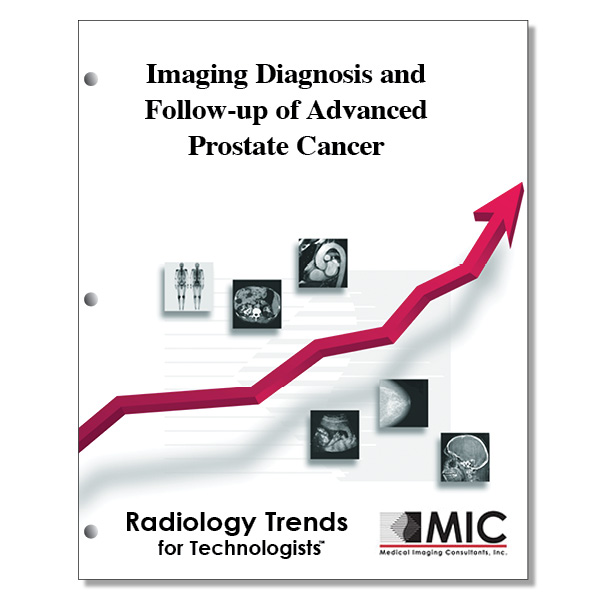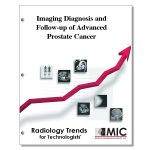

Imaging Diagnosis and Follow-up of Advanced Prostate Cancer
The roles of established and next-generation imaging technologies are discussed in defining the presence and extent of disease to support modern advanced prostate cancer management.
Course ID: Q00621 Category: Radiology Trends for Technologists Modalities: CT, MRI, Nuclear Medicine, PET, Radiation Therapy2.5 |
Satisfaction Guarantee |
$29.00
- Targeted CE
- Outline
- Objectives
Targeted CE per ARRT’s Discipline, Category, and Subcategory classification:
[Note: Discipline-specific Targeted CE credits may be less than the total Category A credits approved for this course.]
Computed Tomography: 0.25
Procedures: 0.25
Abdomen and Pelvis: 0.25
Magnetic Resonance Imaging: 0.25
Procedures: 0.25
Body: 0.25
Nuclear Medicine Technology: 1.00
Procedures: 1.00
Radionuclides and Radiopharmaceuticals: 0.25
Other Imaging Procedures: 0.75
Registered Radiologist Assistant: 0.25
Procedures: 0.25
Abdominal Section: 0.25
Radiation Therapy: 0.25
Procedures: 0.25
Treatment Sites and Tumors: 0.25
Outline
- Introduction
- Advanced Prostate Cancer Imaging at Staging and during Follow-up
- Imaging Assessment of Advanced Prostate Cancer
- Detection of Metastatic Nodal Disease
- Conventional CT Imaging
- MRI
- PET/CT and PET/MRI
- Detection of Bone Metastases
- Standard Bone Scan and CT
- MRI
- PET/CT and PET/MRI
- Other Radiopharmaceuticals to Detect Disease in Advanced Prostate Cancer
- Detection of Metastatic Nodal Disease
- Oligometastatic Prostate Cancer at Initial Staging and Disease Relapse: Changing Paradigm
- Detection of Therapeutic Response
- Assessment of Soft-Tissue Disease Response
- Assessing response of Bone Metastases
- Radionuclide Bone Scan
- Radiopharmaceuticals for PET Imaging
- Circulating Tumor Cells
- Theranostics: Diagnosing and Treating Advanced Prostate Cancer with Radiopharmaceuticals
- Potential and Challenges of Next-Generation Imaging
Objectives
Upon completion of this course, students will:
- list areas associated with disease spread in locally advanced prostate cancer
- identify what characterizes castration-resistant prostate carcinoma
- explain how modern imaging plays a role in the medical management of advanced prostate cancer
- identify next generation imaging modalities
- understand how prostate cancer is categorized into low, intermediate, high and locally advanced risk
- understand the role of imaging in risk stratification
- list the areas that prostate cancer most commonly spread to
- understand which imaging modalities would be ideal for both the detection of nodal metastases and to guide excision during surgery
- explain the apparent diffusion coefficient values of malignant nodes
- isolate the investigational imaging technique that improves sensitivity and specificity for malignant lymph node detection
- identify which molecular PET technique is not ideal for assessing prostate cancer
- identify which molecular PET technique is not ideal for assessing soft tissue disease
- list a second-generation imaging technique with higher spatial resolution that has shown promise for disease staging and biochemical relapse
- understand the advantages associated with SPECT/CT bone scanning and lesion detection
- identify the imaging modalities that underestimate the presence and extent of bone lesions
- identify the imaging modalities that are more sensitive for detecting bone metastases
- list the advantages of 18F NaF PET/CT over SPECT bone scanning
- name the radiopharmaceutical that has been studied for wild-type androgen receptor expression
- define oligometastatic disease
- identify the most common sites of oligometastatic disease relapse
- identify the imaging modality best suited for depicting bone metastases in a CRPC patient with elevated PSA
- understand the relationship between PSA levels and metastatic CRPC
- explain RECIST version 1.1 as it applies to advanced prostate cancer
- identify the validation criteria used with bone scanning to evaluate disease progression following treatment
- describe the bone scan index
- identify which imaging modalities are confounded by the flare phenomenon
- understand the components of MET-RADS-P
- identify areas that can lead to low circulating tumor cells in the presence of widespread disease
- define theranostics
- list radionuclides associated with theranostics
- identify an alpha emitting radionuclide being investigated as a theranostic
- identify observations, following treatment, that are associated with longer overall survival
- understand how 68Ga PSMA PET screening is predictive of decreasing PSA levels following radionuclide treatment
- list the PET agent that can guide future theranostics by providing insight into both receptor expression and signaling pathways
- list roles that next-generation imaging will continue to play in the assessment of advanced prostate cancer
